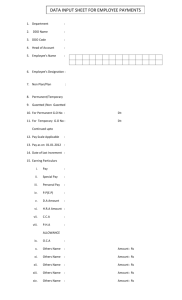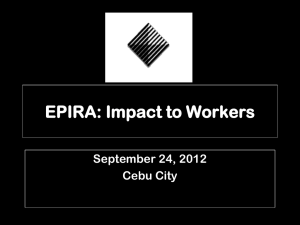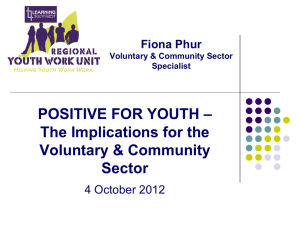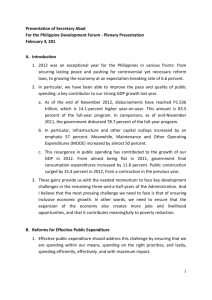THE RWANDAN PAYMENT SYSTEM
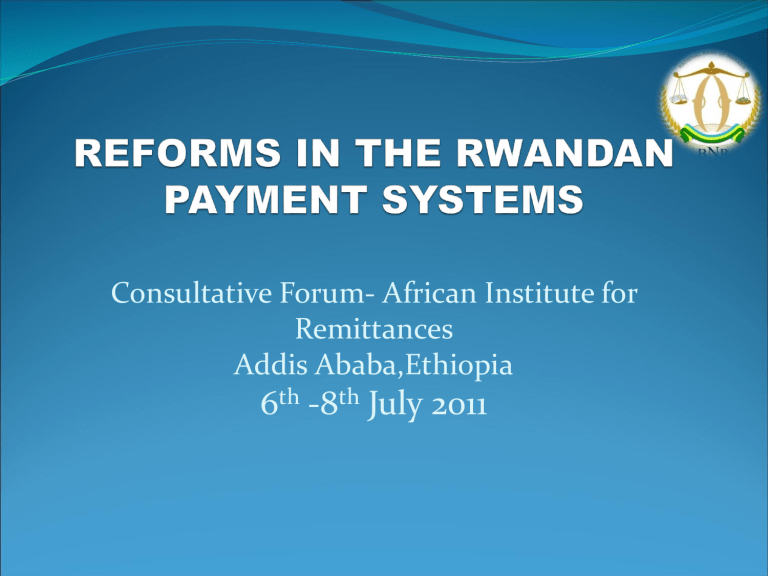
Consultative Forum- African Institute for
Remittances
Addis Ababa,Ethiopia
6 th -8 th July 2011
Content
Reforms
Key Success Factors
Lessons for others
The Reforms
Governance
The Legal Framework
The infrastructure
Governance
2002, a payment systems modernization unit was set up
In 2003, a stock taking exercise was done and a report produced
2007, the NPC and its working groups was set up
2008, The unit became a department of Payment
Systems
Governance Structure
The Central Bank
The Payment Systems Department
The National Payments Council (NPC)
The subcommittees (working Groups) o o
The technical subcommittee (IT experts from all stakeholders)
The Business Strategy subcommittee (Operations experts) o The legal subcommittee (legal experts)
Composition of the NPC o o
The Central Bank
Representative of the Bankers Association
NPC composition Cont…
o o o o o
Representative of the Telecoms
Representative of the Micro Finance Association
Ministry of Finance and Economic Planning
The Rwanda Utilities Regulatory Agency
Rwanda Switch o Rwanda Information Technology Agency
The Bankers Association
Reforms Cont…
The Legal reforms
The NBR act has amended to include NPS oversight
The payment systems law has been Gazetted
A law on negotiable instruments has been Gazetted
A securities holding law exists
an electronic transactions law has been Gazetted
A Regulation governing Payment Services Providers has been Gazetted
Several other regulations have been Gazetted
Reforms Cont…
Infrastructure
In 2005, a National Switch was set up.
Produces cards for the banks
Interconnects all ATMs and POS to ensure interoperability
The same year, a Semi automated Clearing that achieves T+1 clearing and settlement was introduced
2008, technical specifications for implementing the
RIPPS were developed
2010, RIPPS went live
Key Success Factors
The National Switch
The ACH/RTGS/CSD
Opened up competition in the remittances market
Lessons for others
Government support
A fiber optics network was laid in the whole country to easy the flow of information and communication;
A project named E-Government was implemented; this is to make sure that all services offered by
Government departments are done electronically;
